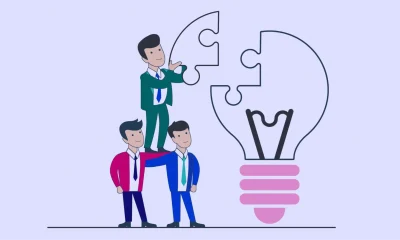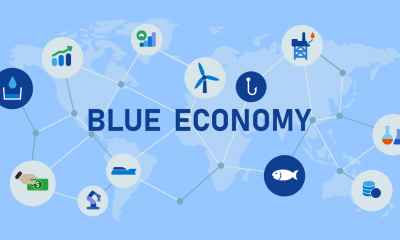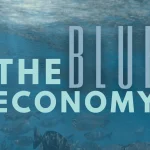By Hon. Prof. Kariuki Muigua, OGW, PhD, C.Arb, FCIArb is a Professor of Environmental Law and Dispute Resolution at the University of Nairobi, Member of Permanent Court of Arbitration, Leading Environmental Law Scholar, Respected Sustainable Development Policy Advisor, Top Natural Resources Lawyer, Highly-Regarded Dispute Resolution Expert and Awardee of the Order of Grand Warrior (OGW) of Kenya by H.E. the President of Republic of Kenya. He is The African ADR Practitioner of the Year 2022, The African Arbitrator of the Year 2022, ADR Practitioner of the Year in Kenya 2021, CIArb (Kenya) Lifetime Achievement Award 2021 and ADR Publisher of the Year 2021 and Author of the Kenya’s First ESG Book: Embracing Environmental Social and Governance (ESG) tenets for Sustainable Development” (Glenwood, Nairobi, July 2023) and Kenya’s First Two Climate Change Law Book: Combating Climate Change for Sustainability (Glenwood, Nairobi, October 2023), Achieving Climate Justice for Development (Glenwood, Nairobi, October 2023) and Promoting Rule of Law for Sustainable Development (Glenwood, Nairobi, January 2024)*
Many countries especially those that are mainly industrialized, newly industrialized and emerging economies partially apply the 3R principles of circular economy (reduce, reuse and recycling of material). It has been observed that the reduce component is mostly practiced in production as a result of competition and the necessity of achieving high input use efficiency. Further, it has been pointed out that in developed nations’ households, recycling of certain materials including glass, plastic, paper, metal and burnable solid waste is becoming more common. On the other hand, municipalities take the responsibility of treating and reusing waste water from households as well as solid waste and recycling auto and household appliances.
It has been pointed out that there are many opportunities to implement circular economy in different sectors including textiles, buildings and construction, and at various stages of a product’s lifecycle, including design, manufacturing, distribution, and disposal. For example, it has been pointed out that in the textiles and fashion sector, there are initiatives that employ regenerative agriculture to produce organic cotton and other natural fibres, through the use of natural colorings and dye, thus ensuring higher quality and safer garments for the health of consumers and the environment. Such an approach ensures that clothing can last longer, be repaired, thrifted, and recycled.
In the building and construction sector, initiatives being undertaken to implement circular economy include reducing raw material use, re-using existing materials in circulation, substituting carbon-intensive materials for regenerative alternatives such as timber, promoting energy efficiency in buildings, recycling, waste management and the use of alternative construction materials, and embracing green buildings and green supply chains within the construction industry. Implementation of circular economy principles in the construction industry promotes the use of sustainable materials, maximizing material recovery, and avoiding unnecessary waste generation and waste disposed to landfill. In addition, there are numerous opportunities for the private sector to implement circular economy.
It has been observed that ensuring the success of circular economy requires the active engagement of the private sector, which brings with it innovation and investment, to identify new green circular business models. For example, circular economy offers the hospitality sector an opportunity to move away from single-use plastic items and the transport sector to unlock opportunities for e-mobility. By implementing circular economy, the hospitality sector can address the problem of plastic through elimination of problematic or unnecessary plastic packaging through redesign, innovation, and new delivery models; applying reuse models where relevant therefore reducing the need for single-use packaging; ensuring that plastic packaging is 100% reusable, recyclable, or compostable; ensuring that the use of plastic is fully decoupled from the consumption of finite resources; and making sure that plastic packaging is free of hazardous chemicals, and the health, safety, and rights of all people involved are respected and protected.
The transport sector can also implement circular economy through approaches such as promoting public transport in order to reduce carbon emissions, encouraging active transport such as walking and cycling, embracing hybrid vehicles, adopting a shared economy approach, and encouraging the use of sustainable fuels including biofuels and hydrogen among others. It has also been argued that there is need for circular economy approaches in the transport sector such as designing vehicles to be more lightweight so that fewer materials are needed to make them, and less energy is needed to power them and recycling end-of-life tyres.
It has been pointed out that by transitioning toward a circular economy and making efforts to reduce waste, emissions from the materials used in manufacturing vehicles could be reduced by up to 70 per cent by the year 2050 or an equivalent of 250 million tons of carbon dioxide. It is therefore evident that there are numerous opportunities to implement circular economy. The private sector therefore has a vital role to play in implementing circular economy. It has also been pointed out that the public can implement circular economy by demanding environmentally friendly products and services and actively minimizing waste by embracing practices such as reducing, reusing and recycling of materials.
Circular economy is being implemented in Europe through the European Union Circular Economy Action Plan. The action plan seeks to ensure that products within the European Union are fit for a climate-neutral, resource-efficient and circular economy, reduce waste and ensure that the performance of frontrunners in sustainability progressively becomes the norm.
The Action plan embraces the sustainability principles of circular economy and seeks to achieve various targets which include improving product durability, reusability, upgradability and reparability, addressing the presence of hazardous chemicals in products, and increasing their energy and resource efficiency; increasing recycled content in products, while ensuring their performance and safety; enabling remanufacturing and high-quality recycling; restricting single-use and countering premature obsolescence; introducing a ban on the destruction of unsold durable goods; incentivising product-as-aservice or other models where producers keep the ownership of the product or the responsibility for its performance throughout its lifecycle; mobilising the potential of digitalisation of product information, including solutions such as digital passports, tagging and watermarks; and rewarding products based on their different sustainability performance, including by linking high performance levels to incentives.
The Action Plan acknowledges that circular economy is an essential part of a wider transformation of industry towards climate neutrality and long-term competitiveness. It further points out that circular economy can deliver substantial material savings throughout value chains and production processes, generate extra value and unlock economic opportunities.
The Action Plan envisages implementation of circular economy across key products and value chains including electronics and Information and Communications Technology (ICT), batteries and vehicles, packaging, plastics, textiles, construction and buildings, and food, water and nutrients. Actualizing the European Union Circular Economy Action Plan can accelerate the transition to circular economy in the European Union and beyond.
*This is an extract from the Book: Promoting Rule of Law for Sustainable Development (Glenwood, Nairobi, January 2024) by Hon. Prof. Kariuki Muigua, OGW, PhD, Professor of Environmental Law and Dispute Resolution, Senior Advocate of Kenya, Chartered Arbitrator, Kenya’s ADR Practitioner of the Year 2021 (Nairobi Legal Awards), ADR Lifetime Achievement Award 2021 (CIArb Kenya), African Arbitrator of the Year 2022, Africa ADR Practitioner of the Year 2022, Member of National Environment Tribunal (NET) Emeritus (2017 to 2022) and Member of Permanent Court of Arbitration nominated by Republic of Kenya. Prof. Kariuki Muigua is a foremost Environmental Law and Natural Resources Lawyer and Scholar, Sustainable Development Advocate and Conflict Management Expert in Kenya. Prof. Kariuki Muigua teaches Environmental Law and Dispute resolution at the University of Nairobi School of Law, The Center for Advanced Studies in Environmental Law and Policy (CASELAP) and Wangari Maathai Institute for Peace and Environmental Studies. He has published numerous books and articles on Environmental Law, Environmental Justice Conflict Management, Alternative Dispute Resolution and Sustainable Development. Prof. Muigua is also a Chartered Arbitrator, an Accredited Mediator, the Managing Partner of Kariuki Muigua & Co. Advocates and Africa Trustee Emeritus of the Chartered Institute of Arbitrators 2019-2022. Prof. Muigua is a 2023 recipient of President of the Republic of Kenya Order of Grand Warrior (OGW) Award for his service to the Nation as a Distinguished Expert, Academic and Scholar in Dispute Resolution and recognized among the top 5 leading lawyers and dispute resolution experts in Band 1 in Kenya by the Chambers Global Guide 2022 and was listed in the Inaugural THE LAWYER AFRICA Litigation Hall of Fame 2023 as one of the Top 50 Most Distinguished Litigation Lawyers in Kenya and the Top Arbitrator in Kenya in 2023.
References
Africa Circular Business Alliance., ‘Circular Economy Implementation Strategies for Sustainable Transportation.’ Available at https://www.linkedin.com/pulse/circulareconomy-implementation-strategies/ (Accessed on 01/12/2023).
Africa Circular Economy Network., Available at https://www.acen.africa/ (Accessed on 01/12/2023).
Africa Development Bank Group., ‘The African Circular Economy Alliance (ACEA).’ Available at https://www.afdb.org/en/topics-andsectors/topics/circular-economy/african-circular-economy-alliance-acea (Accessed on 01/12/2023).
African Development Bank Group., ‘African Development Bank Group Launches Dedicated Trust Fund for Circular Economy.’ Available at https://www.afdb.org/en/news-and-events/press-releases/african-developmentbank-group-launches-dedicated-trust-fund-circular-economy-51948 (Accessed on 01/12/2023).
East African Community., ‘Regional Bioeconomy Strategy 2021/22-2031/32.’ Available at https://www.eac.int/press-releases/2515-eac-unveils-regionalbioeconomy-strategy-2021-22-2031-32 (Accessed on 01/12/2023).
Ellen MacArthur Foundation.,’ What is a Circular Economy?.’ Available at https://www.ellenmacarthurfoundation.org/topics/circular-economyintroduction/overview#:~:text =The%20circular%20economy%20is%20a,remanufact ure%2C%20recycling%2C%20and%20composting (Accessed on 30/11/2023).
Ellen McArthur Foundation., ‘Completing the Picture: How the Circular Economy Tackles Climate Change.’ Available at https://www.ellenmacarthurfoundation.org/completing-the-picture (Accessed on 30/11/2023).
Ellen McArthur Foundation., ‘Plastics and the Circular Economy -Deep Dive.’ Available at https://www.ellenmacarthurfoundation.org/plastics-and-the-circulareconomy-deepdive#:~:text=The%20vision%20for%20a%20circular%20economy%20for%20plastic% 20has%20six,need%20for%20single%2Duse%20packaging (Accessed on 01/11/2023).
European Commission., ‘A new Circular Economy Action Plan For a Cleaner and More Competitive Europe.’ Available at https://eurlex.europa.eu/resource.html?uri=cellar:9903b325-6388-11ea-b735- 01aa75ed71a1.0017.02/DOC_1&format=PDF (Accessed on 01/12/2023).
European Parliament., ‘Circular Economy: Definition, Importance and Benefits.’ Available at https://www.europarl.europa.eu/news/en/headlines/economy/20151201STO0560 3/circular-economy-definition-importance-andbenefits#:~:text=The%20circular%20economy%20is%20a,cycle%20of%20 products%2 0is%20extended (Accessed on 30/11/2023).
Fwangkwal. B., Luotonen. E., & Jarvinen. L., ‘Africa’s Circular Economy Needs Support from Policymakers.’ Available at https://www.sitra.fi/en/articles/africas-circulareconomy-needs-support-from-policymakers/ (Accessed on 30/11/2023).
Gendre. I., ‘Circular Economy: Definition and Principles.’ Available at https://greenly.earth/en-us/blog/company-guide/circular-economy-definition-and-principles (Accessed on 30/11/2023).
Greenovations-Africa., Available at https://vc4a.com/greenovationsafrica/greenovations-africa-2023/ (Accessed on 01/12/2023).
Heshmati. A., ‘A Review of the Circular Economy and its Implementation.’ Available at https://docs.iza.org/dp9611.pdf (Accessed on 01/12/2023).
Lewis. I., ‘AfDB’s Donor-Funded Facility Supports Africa’s Circular Economy.’ Available at https://impact-investor.com/afdbs-donor-funded-facility-supportsafricas-circular-economy/ (Accessed on 30/11/2023).
Muriithi. J., & Ngare. I., ‘Transitioning Circular Economy from Policy to Practice in Kenya.’ Available at https://www.frontiersin.org/articles/10.3389/frsus.2023.1190470/full#:~:text=Kenya%20has %20been%20working%20toward,new%20avenues%20for%20financial%20growth (Accessed on 30/11/2023).
Mwita. M., ‘East Africa Mulls Shifting from Linear to Circular Economy.’ Available at https://theexchange.africa/investing/africas-development/east-africa-mulls-shifting-fromlinear-to-circular-economy/ (Accessed on 01/12/2023).
Nairobi Garage., ‘Mr Green Africa // Kenyan Recycling Startup Secures Round of Funding.’ Available at https://nairobigarage.com/mr-green-africa-secures-round-offunding/ (Accessed on 01/12/2023).
Norouzi. M., ‘Circular Economy in the Building and Construction Sector: A Scientific Evolution Analysis.’ Journal of Building Engineering, Volume 44, 2021.
Packaging Europe., ‘Afri-Plastics Challenge Provides Funding for African Recycling Businesses, New Bioplastics, Waste Conversion Processes, and more.’ Available at https://packagingeurope.com/news/afri-plastics-challenge-provides-funding-forafrican-recycling-businesses-new-bioplastics-waste-conversion-processes-andmore/9548.article#:~:text=Afri%2 DPlastics%20Challenge%20provides%20funding,a nd%20more%20%7C%20Article%20%7C%20 Packaging%20Europe (Accessed on 01/12/2023).
The 10 Principles of a Circular Economy., Available at https://www.lombardodier.com/contents/corporate-news/responsiblecapital/2020/september/the-10-steps-to-a-circular-econo.html (Accessed on 30/11/2023).
United Nations Development Programme., ‘Circular Economy.’ Available at https://climatepromise.undp.org/what-we-do/areas-of-work/circular-economy (Accessed on 30/11/2023).
United Nations Development Programme., ‘Goal 12: Responsible Consumption and Production.’ Available at https://www.undp.org/sustainable-developmentgoals/responsible-consumption-and-production (Accessed on 30/11/2023).
United Nations Development Programme., ‘What is Circular Economy and Why Does it Matter?.’ Available at https://climatepromise.undp.org/news-andstories/what-is-circular-economy-and-how-it-helps-fight-climate-change (Accessed on 30/11/2023).
United Nations Development Programme., ‘Why the Green, Circular Economy is Key to Beating the Triple Planetary Crisis.’ Available at https://www.undp.org/blog/whygreen-circular-economy-key-beating-triple-planetary-crisis (Accessed on 30/11/2023).
Vandycke. N et al., ‘Defining the Role of Transport in the Circular Economy.’ Available at https://blogs.worldbank.org/transport/defining-role-transportcircular-economy (Accessed on 01/12/2023).





 Lawyers1 year ago
Lawyers1 year ago
 News & Analysis3 years ago
News & Analysis3 years ago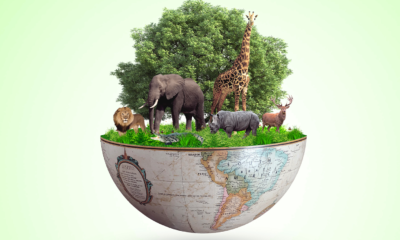
 News & Analysis3 years ago
News & Analysis3 years ago
 Lawyers1 year ago
Lawyers1 year ago
 News & Analysis2 years ago
News & Analysis2 years ago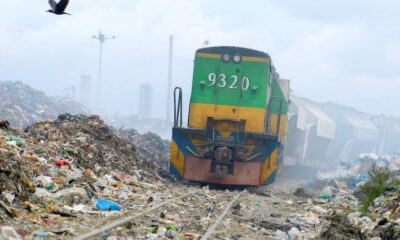
 News & Analysis1 year ago
News & Analysis1 year ago
 News & Analysis3 years ago
News & Analysis3 years ago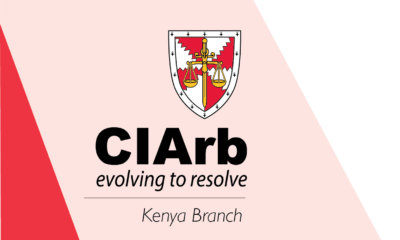
 News & Analysis1 year ago
News & Analysis1 year ago









